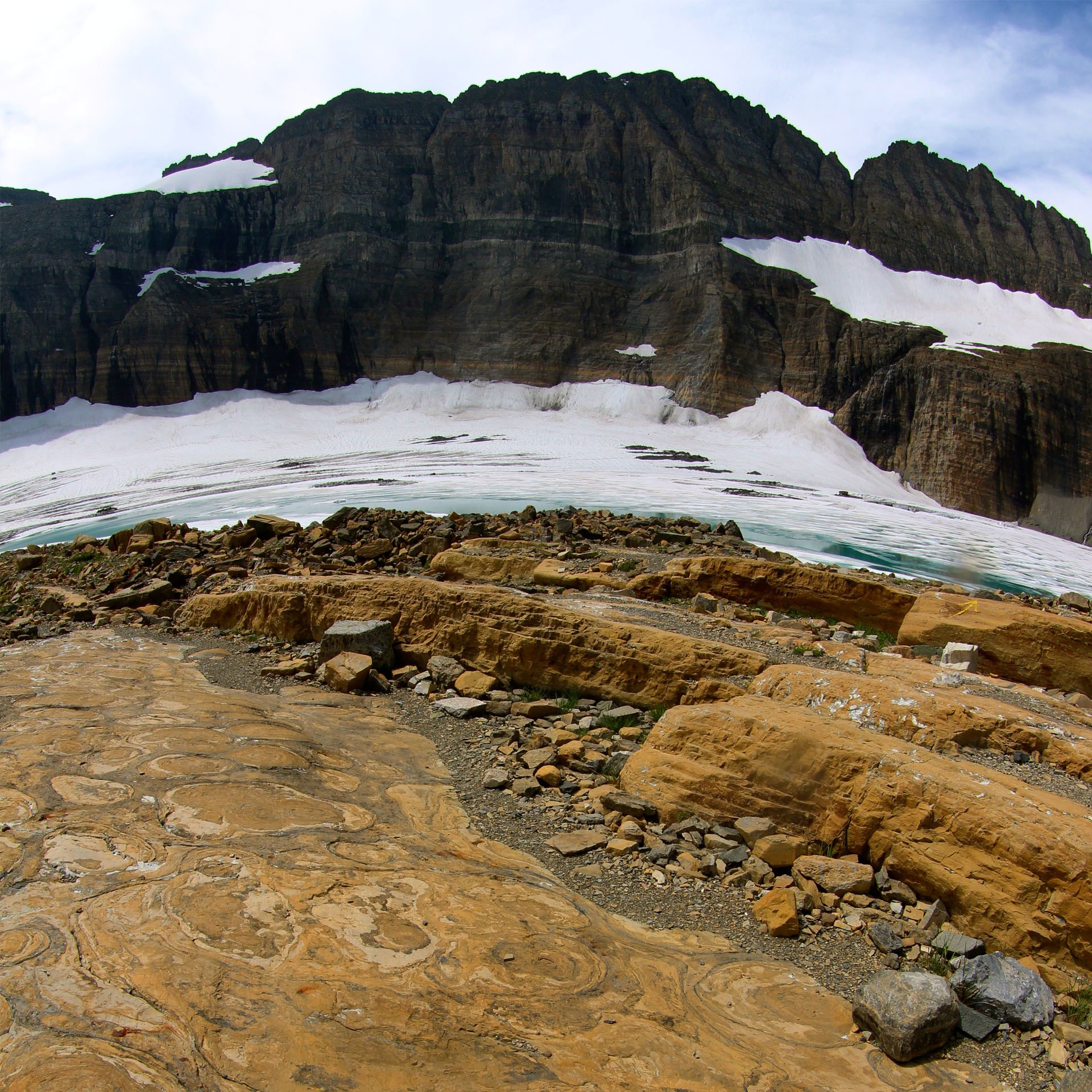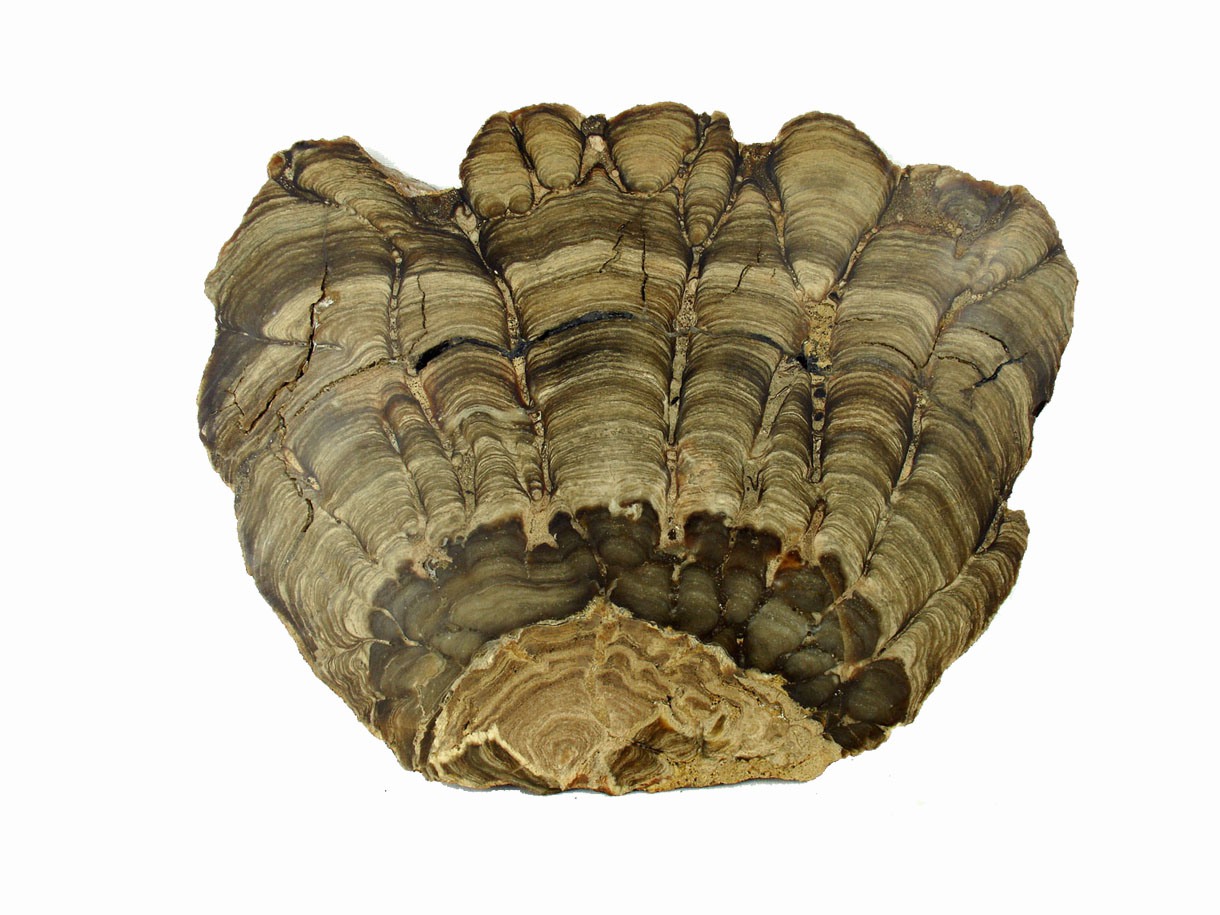
The Homeland Issue
A Geologist’s Reminder
With all the reports out these days surrounding climate change and the future of the planet, it is important to take a step back and consider a broad look at Earth’s history.
Since its formation 4.57 billion years ago, Earth has undergone incredible changes. For millions of years, our planet was either a ball of molten rock or a frozen wasteland covered by glaciers. Earth as we see it today, cycling liquid water and flourishing with life, is a relatively new phase in its storied career. For the first many millions of years of its existence, Earth was incapable of housing life as we know it today. The planet was constantly bombarded by space debris that would go on to make up our crust, heavy metal core, and everything in between. This made the Earth roil in continuous, violent tectonic collisions and volcanic eruptions, emitting massive amounts of heat energy into the atmosphere.
[Interactive]
After clearing much of its orbital field of space rocks 4.4 billion years ago, Earth finally had a chance to cool down somewhat over the course of millions of years. Molten rock underneath the planet’s thin cooling crust, however, continued to churn, creating incredible volcanic eruptions of carbon dioxide and sulfuric gases. Earth, heavy in thick layers of these greenhouse gases, continued to trap a lot of heat during this time period.
It was not until prokaryotic life and photosynthesizing organisms appeared in the rock record nearly 2.4 billion years ago, that scientists see evidence of atmospheric gas ratios even resembling that of current levels (Bekker et al. 2004). These early life-forms began impacting Earth in incredible ways, shaping the early atmosphere and creating an environment where life was finally able to diversify and evolve.
The oldest organisms preserved in the current rock record are stromatolites (Nutman et al. 2016), layered sedimentary structures produced by the buildup of microbial colonies and mud. They were among the first colonizing organisms in the ocean, and dominated vast stretches of shallow reef environments in Earth’s early history.
While on the outside, stromatolites appear to be nothing more than an algal mass; a sea lump, a squishy ocean pod, they were among the first photosynthetic organisms on the planet. They voraciously consumed the abundant CO2 in the atmosphere and began producing the first O2 on Earth.
But oxygen, that beloved gas of humanity and life, was, during the reign of the stromatolite, a new and deadly threat to other life-forms on the planet. In fact, these seemingly inconspicuous microbes (along with other gas-producing organisms of the era) were involved in something known as the Great Oxygenation Event of Earth’s atmosphere — one of the most devastating mass extinctions in the planet’s early history (Margulis and Sagan 1997; Fischer et al. 2016).
The Great Oxygenation Event, also known as the oxygen crisis, occurred 2.4 billion years ago. Thanks to stromatolites, the slow but constant addition of O2 into the planet’s atmosphere likely caused one of the largest die-offs of obligate anaerobic organisms (which cannot live in what we know as normal, highoxygen atmospheric conditions) in the planet’s history. The ecologic phenomena caused by oxygen-producing stromatolites also set into motion possibly the longest-ever mass-freezing of Earth’s exterior, known to scientists as “Snowball Earth” (Kopp et al. 2005).

Here’s how it happened: According to what we know of greenhouse gases today, the influx of oxygen into the Earth’s environment brought by stromatolites and other O2-producing organisms would have oxidized free methane in the atmosphere, changing it to carbon dioxide. Since methane is a much more powerful greenhouse gas than CO2, its reduction meant that less heat was ultimately trapped across the planet. Over time, this escape of heat led to what is known in geological contexts as the Huronian Glaciation, which occurred 2.4 to 2.1 billion years ago in the heart of what will come to be America’s homeland (Melezhik 2006).
While the overt destruction of anaerobic life and general uninhabitable conditions due to widespread glaciation may seem catastrophic (and most certainly it was) there was a silver lining to the destruction. The introduction of oxygen is also thought to be responsible for the incredible diversification and proliferation of life-forms as we know them today. Eukaryotes and multicellular life are seen developing post-glaciation, laying down the roots for modern morphologies and adaptations from 2 billion years ago and onward.
There is no question that humans are currently having a direct impact on our own environment, and very arguably, this is not an unnatural occurrence. Ever since stromatolites started producing oxygen billions of years ago, organisms have played an active role in Earth’s chemical cycles. For better or for worse, organisms will always influence the composition of the atmosphere. In fact, we now know that without the life-induced climate change in the early atmosphere, humans would probably not exist to the same extent today.
However, this is not to say that the current rapid and dramatic changes humans are inflicting on the atmosphere are out of our control. Most interactions organisms have with the atmosphere thus far have been essential to their survival. This is not the case for humans. Unlike the stromatolite, humans are aware of their impact, and have the power to choose how that impact is managed.
[interactive]
With rising CO2 levels, those species that have benefitted from past atmospheric gas ratios (like humans and other mammals, as well as marine life) will likely begin to find Earth a harsh and dangerous place to inhabit. Meanwhile, other life forms, such as plants, might thrive in a higher carbon dioxide environment (Ainsworth and Long 2005).
Geologists also note that rapid environmental changes like those observed today are almost always a precursor to a mass die-off in the rock record. We are already experiencing bleaching of our coral reefs, and if current oceanic environmental changes continue to progress, we could be looking at the sixth great extinction event in Earth’s history. With acidic, heat-laden oceans and violent storms increasing in both winter and summer months across the planet, future climate predictions do not bode well for sustaining the planet’s ecosystems.
Humans have proven to be an adaptable species, mainly due to our high level of technological ingenuity. However, we are still very susceptible to nutritional deprivations, temperature fluctuations, communicable diseases and general exposure. The risk for these devastating, humanity-ending changes only increases with the amount of change we personally contribute to the system — the biggest threat being a cascading breakdown of ecosystems and the environmental resources we depend on.
The argument that similar environmental change has occurred before in Earth’s history may be true, but it does not justify our inaction. Without a clear understanding of our planet’s history, we cannot hope to ensure the continuation of our species. Ignoring the issue will only result in the destruction of more life, and as we’ve seen before, also generate the stimulus for new life-forms.
The Earth, bound by the laws of physics, works as an engine of balance and harmony, spreading heat, reflecting or trapping light, and pushing water through a never-ending cycle. We have certainly revved that engine, but remember: that’s not to the detriment of Earth itself. The planet will continue to do these things for millions of years after we fade from existence.
The Earth is resilient, it’s human life that’s endangered
Ainsworth, Elizabeth A., and Stephen P. Long. “What have we learned from 15 years of free-air CO2 enrichment (FACE)? A meta-analytic review of the responses of photosynthesis, canopy properties and plant production to rising CO2.” New Phytologist, vol. 165, no. 2, February 2005, pp. 351-372, Wiley, DOI: 10.1111/j.1469-8137.2004.01224.x.
Bekker, Andrey, H. D. Holland, P. L. Wang, D. Rumble, H. J. Stein, J. L. Hannah, L. L. Coetzee, and N. J. Beukes. “Dating the rise of atmospheric oxygen.” Nature, vol. 427, January 2004, pp. 117-120, www.nature.com, DOI: 10.1038/nature02260
Fischer, Woodward W., James Hemp, and Joan Selverstone Valentine. “How did life survive Earth’s great oxygenation?” Current Opinion in Chemical Biology, vol. 31, April 2016, pp. 166-178, Elsevier, DOI: 10.1016/j.cbpa.2016.03.013.
Kopp, Robert E., Joseph L. Kirchvink, Isaac A. Hilburn, and Cody Z. Nash. “The Paleoproterozoic snowball Earth: A climate disaster triggered by the evolution of oxygenic photosynthesis.” PNAS, vol. 102, no. 32, August 2005, pp. 11131-11136, www.pnas.org, DOI: 10.1073/pnas.0504878102.
Margulis, Lynn, and Dorion Sagan. “Microcosmos: Four Billion Years of Evolution from Our Microbial Ancestors.” University of California Press, 1997.
Melezhik, Victor A. “Multiple causes of Earth’s earliest global glaciation.” Terra Nova, vol. 18, no. 2, April 2006, pp. 130-137, Wiley, DOI: 10.1111/j.1365-3121.2006.00672.x.
Nutman, Allen P., Vickie C. Bennett, Clark R. L. Friend, Martin J. Van Kranendonk, and Allan R. Chivas. “Rapid emergence of life shown by discovery of 3,700-million-year-old microbial structures.” Nature, vol. 537, August 2016, pp. 1-12. www.nature.com, DOI: 10.1038/nature19355.
What Is Global Warming? (National Geographic)
Stepping Stones Through Time (Astrobiology Magazine)
3.77-Billion-Year-Old Fossils Stake New Claim to Oldest Evidence of Life (Science Magazine)
Luke Halter is an Alaska-based geology buff, mad scientist, and outdoor enthusiast. Known locally as Laboratory Luke, he is a passionate communicator and educator, aiming to promote imaginative scientific discovery in students of all ages. He is also a youth climbing instructor at Alaska Rock Gym.
Visualizations by Fei Liu for Silica Magazine.
Lead Image: “Stromatolite fossils in precambrian sediment” by Roy Luck is licensed under CC-BY 2.0.
Thumbnail Image: “Modern Stromatolites” by Paul Harrison is licensed under CC-BY-SA 3.0.